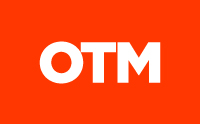Want to boost Net Promoter Score? Give your employees the initiative.
Changing from within.
A global banking success story
If you’re a major retail bank with low customer satisfaction, the root causes are likely to be complex. To turn things around, you need to move fast and decisively.
Our client was committed to long-term change. The question was, where to start? Technology and infrastructure problems vied for attention with overly complex KPIs, a demotivated workforce and other issues.
OTM’s Human Affinity method offered a quick route to the answer.
Our client was committed to long-term change. The question was, where to start? Technology and infrastructure problems vied for attention with overly complex KPIs, a demotivated workforce and other issues.
OTM’s Human Affinity method offered a quick route to the answer.
Revealing what really matters
Human Affinity begins with people. In this case, that meant employees in multiple locations and at every level of the bank – from senior executives to branch teams at the customer-service coalface.
Our series of collaborative workshops stuck to a key principle: never assume. By starting with open, exploratory questions like “why are you here?” and “what is the point of doing your job?” we freed people up to tell their stories. And, in doing so, uncovered a world of unmet needs and frustrated motivations that were seriously impacting customer service.
Our series of collaborative workshops stuck to a key principle: never assume. By starting with open, exploratory questions like “why are you here?” and “what is the point of doing your job?” we freed people up to tell their stories. And, in doing so, uncovered a world of unmet needs and frustrated motivations that were seriously impacting customer service.
Healing the “human needs deficit”
Human Affinity gets to the heart of an issue quickly, by starting with those whose experience is richest and most relevant. But it also offers solutions.
The end result was a new internal marketing strategy, developed by employees themselves. This was built around five “human needs” pillars, the first and most important of which was “proof”: for the strategy to succeed, colleagues needed to see tangible evidence of change – throwaway soundbites and internal campaigns would no longer do. After seeing the deep value of the process, the bank’s leadership made clear their commitment to listen - and act.
The end result was a new internal marketing strategy, developed by employees themselves. This was built around five “human needs” pillars, the first and most important of which was “proof”: for the strategy to succeed, colleagues needed to see tangible evidence of change – throwaway soundbites and internal campaigns would no longer do. After seeing the deep value of the process, the bank’s leadership made clear their commitment to listen - and act.
Happy employees really do create happy customers
The client’s internal culture has already transformed in several ways: from siloed to collaborative, from reactive to proactive, and - most importantly - from bank-focused to customer-focused. Customer experience and complaints resolution are visibly better, and the bank is looking forward to an uplift in its NPS scores.



